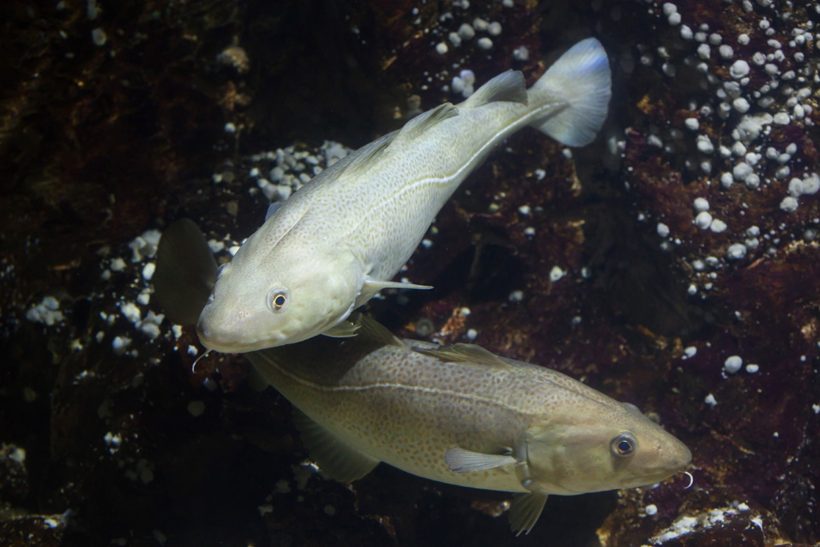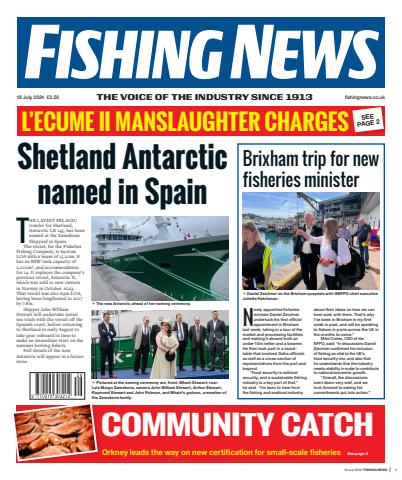Fishermen will have bigger quotas for most key North Sea demersal stocks next year after a deal was reached on 9 December between the UK, EU and Norway on shared stocks, reports Tim Oliver.
They include a highly welcome 63% increase on cod, 30% each for haddock and whiting, 19% for saithe and 6% for plaice. The only cut is -7% for herring.
The agreement also underlines the importance of continuing discussions in early 2023 to agree new comprehensive sharing arrangements for these stocks.
Defra said the deal will give the UK industry fish worth £202m in 2023, an increase of £33m over the value of this year’s TACs. Sustainability had been ‘at the heart of the UK’s approach’ to the negotiations, which were set in line with, or lower than, ICES advice.
UK fisheries minister Mark Spencer said: “I’m pleased we have reached agreements with the EU and Norway, and wider coastal states, to secure important fish stocks worth over £450m for the UK fishing fleet in 2023.
“The deals will help support a sustainable, profitable fishing industry for years to come while continuing to protect our marine environment and vital fishing grounds.”
Defra said the UK government had worked closely with the devolved administrations throughout the negotiations ‘to ensure that fishing communities across the UK will benefit from the agreement’.
Scottish rural affairs secretary Mairi Gougeon said: “It is good to see the action that has been taken to protect North Sea stocks in recent years paying off, leading the way to increased access for Scotland’s fishers.
“These stocks are of key commercial importance to Scotland, and the increase in cod is a result of Scottish fishers’ efforts on recovery.
“The success of those efforts is reflected in the latest scientific advice, which has permitted significantly greater catches than last year.
“That is good news for Scotland’s fishers, who will have access to considerably greater whitefish quotas this year, with a positive economic effect for our fishing communities.”
The value to Scotland of the trilateral deal is estimated to be £128m, up from £97m last year.
Industry position ‘vindicated’
Industry leaders welcomed the increased TACs for the major demersal North Sea stocks.
Elspeth Macdonald, chief executive of the SFF, said: “In addition to the agreement already reached between the UK and Norway on fishing opportunities for 2023, SFF welcomes the three-way agreement reached this week between the UK, Norway and the EU on TACs for the six jointly managed stocks in the North Sea.
“It is heartening that the fisheries managers’ decisions reflect ICES’s very positive scientific advice on shared demersal stocks and in particular, a 63% increase in the TAC for North Sea cod. This vindicates industry’s view that the huge cuts suffered by our fleet over the last three years were not justified.
“We look forward to a full review of the North Sea cod assessment through the ICES benchmark process early in 2023, and to a future where fishermen’s knowledge and expertise can play a meaningful role in stock assessments and catch advice.”
She said the industry was grateful for the ‘sustained efforts’ of the Scottish and UK negotiating teams during ‘a very busy spell’ to secure good outcomes for the Scottish industry.
“Their work isn’t over yet however, as some negotiations remain ongoing, and there are further talks on key pelagic stocks that will continue into next year.”
Barrie Deas, chief executive of the NFFO, said it was a good outcome. “The science was very strong on the demersal stocks, which is a good place to start,” he said.
“We got the full uplift on the cod which is very helpful and brings the science back into alignment with the industry’s perception of the stock’s abundance, and also helps with any potential choke or discard issues, which is very welcome.
“Although the 30% haddock and whiting increases are much lower than the ICES single stock advice would suggest, there is a general recognition that it was probably wise not to take the full amounts.”
Also welcoming the deal, and in particular the 63% increase in North Sea cod, Simon Collins, executive officer of the Shetland Fishermen’s Association (SFA), said: “This is absolute vindication for skippers who have always argued that swingeing cuts to cod quotas in recent years were excessive relative to the abundance of the stock seen on the grounds.
“Deficiencies in stock assessment processes are finally being addressed, and the science is now catching up with reality, proving that fishermen have had the right of it. Today’s announcement gives lie to the notion propagated by eNGOs that cod stocks are facing ‘extinction’, or that fish stocks in our seas are in poor shape – when in fact the opposite is true.
“The agreed quota increases also announced today for other species such as haddock, saithe and whiting mean a more viable future for Shetland’s family- owned fishing fleet, on which the well-being of our whole wider community depends.”
The SFA said stocks of Scotland’s key commercial fish species, especially haddock and cod, are at their highest level for decades according to new official assessments. The spawning stock biomass of haddock is the largest it has been since 1972, and cod the largest since 1998.
Other species in the North Sea, such as whiting and plaice, are also up – and predicted to rise further.
‘Bigger biomass than for years’
Mike Park, chief executive of the Scottish White Fish Producers’ Association and chairman of the international industry-led Northern Fishing Alliance (NFA), said it was pleasing that the increase in the cod TAC reflects the position the NFA set out in papers earlier this year and at the back end of last year.
“The cod increase recognises the movement of the stock, which we’ve said because of the abundance inshore, the southern movement of the northern stocks, suggests there is a bigger biomass there than there has been for a number of years,” he told Fishing News.
“The cod TAC alone probably injects about £14m back into the UK industry, which will make a significant difference to a lot of people.
“Also, the increase will be caught – it’s not like the haddock or the whiting where there is a high probability we won’t catch the increased amount. But the increase in cod and in saithe, these are things we can turn into cash almost immediately.”
He pointed out that the increase also injected more cod quota into Europe, some of which the UK POs would be able to negotiate back into the UK.
“Currently we get around 45% of the TAC and Europe gets about 37%, but the increase of 63% is 63%-plus for us. We have just short of 10,000t and the EU has just over 8,000t, and Europe won’t catch all that, so there are deals to be done for the POs to bring that fish into the UK.
“It loosens up the whole system, and when that happens the quota leasing costs come down as well.”
He said good news had been a long time coming, and he hoped the industry could continue on this trajectory.
“When you look at the biomass of haddock and whiting in the sea now there does seem to be a sort of mini ‘gadoid outburst’ going on at the moment, so we need to manage that well. If this trend continues, then we should be moving into a reasonably comfortable area in terms of biomass for the next foreseeable while.”
This story was taken from the latest issue of Fishing News. For more up-to-date and in-depth reports on the UK and Irish commercial fishing sector, subscribe to Fishing News here or buy the latest single issue for just £3.30 here.






